As expected, the eggs under the broody hen began hatching this morning. I was outside doing chores and cleaning up the garage for a long time and heard nothing. I finally peeked under the hen and all these teetering yellow fluffballs started peeping. My heart almost burst from a combination of gratitude, excitement, and awe.
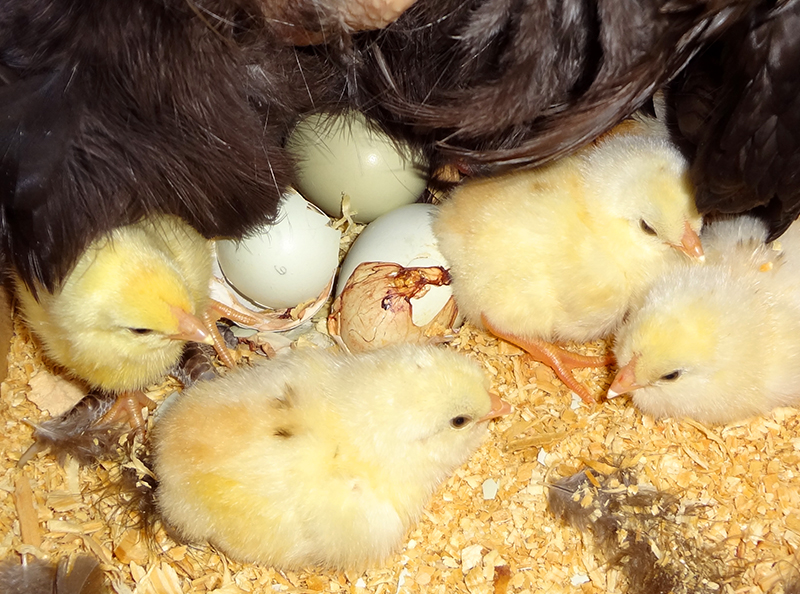
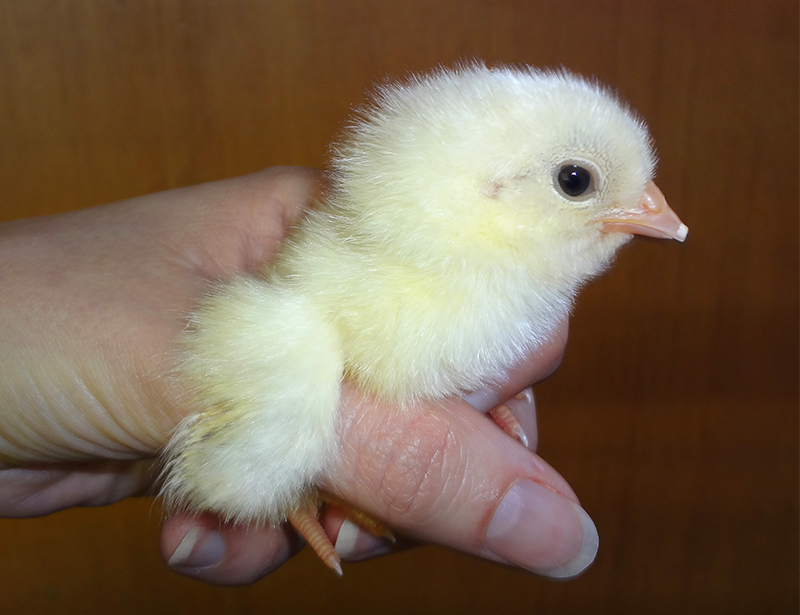
I can’t really explain this emotion I get from hatching chicks, but it’s addictive and drug-like and makes me feel better than few other things. I suspect it stems from bearing witness to the divine, to seeing something so commonplace and taken-for-granted as a chicken egg turn, in just twenty days, into a walking, chirping, perfectly formed and bright-eyed living being.
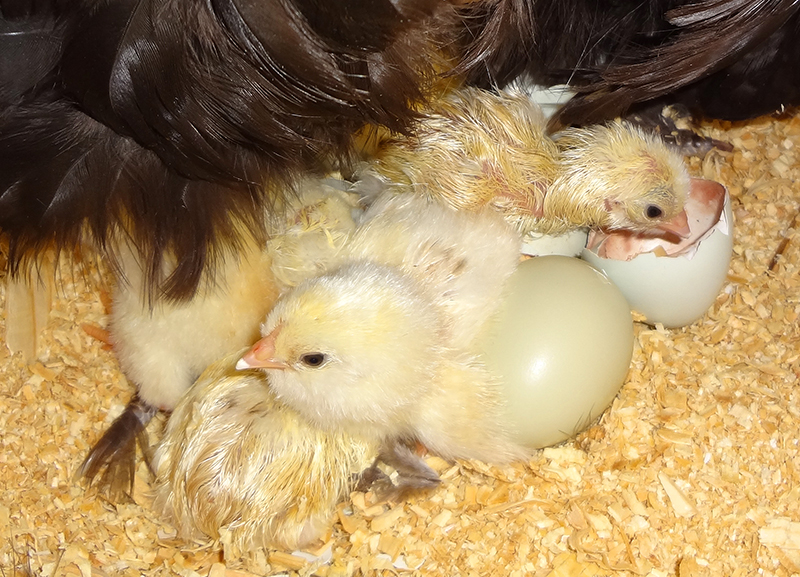
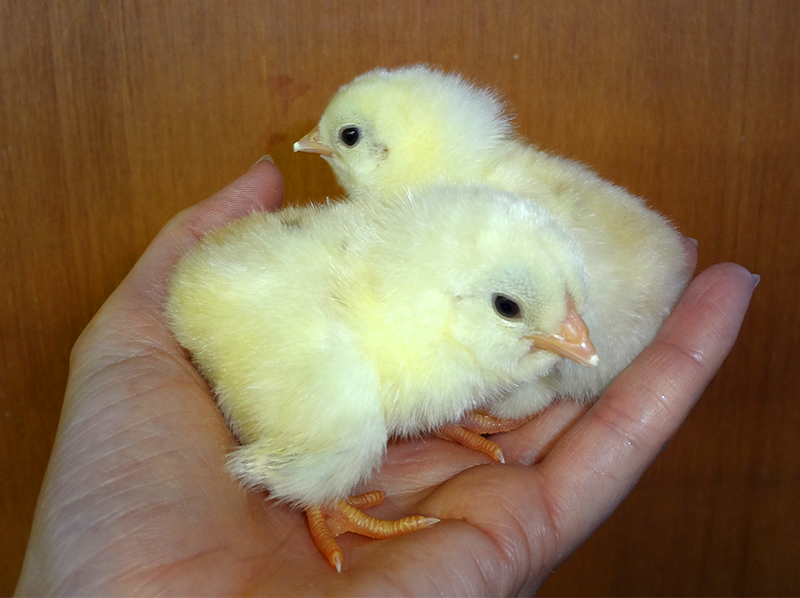
I don’t consider myself particularly religious, and I don’t have children and probably never will. But I imagine that what I feel watching these chicks develop in their eggs and hatch is a microcosm of both experiences. A microcosm of a miracle. So infinitesimal, and so huge.
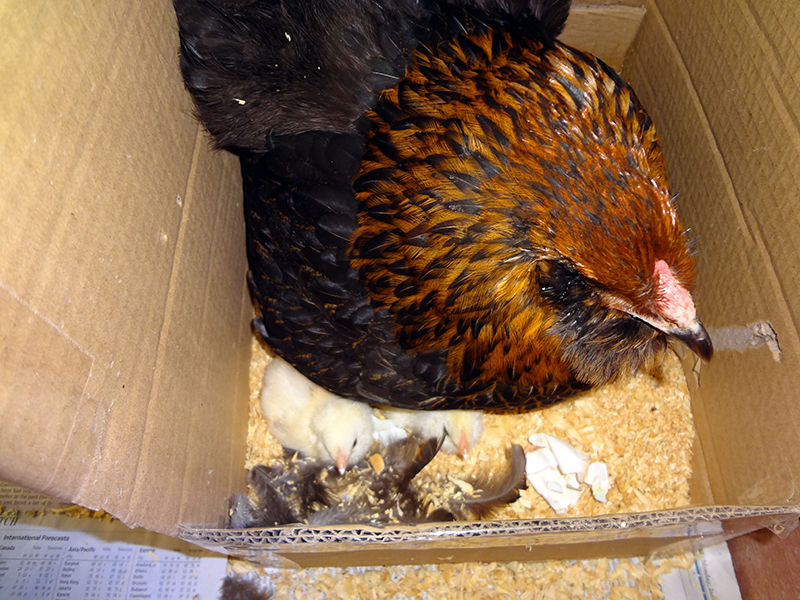

Today is day 20 for the eggs that are incubating under the broody hens. Last night I discovered another broken rotten egg under Dahlia, the Black Copper Marans, and had to clean that up.
I check the nests this morning, just by listening for peeping, and heard nothing. Then tonight at 6:00 p.m. I went out and saw that Dahlia had thrown one of the remaining Coronation Sussex eggs (two others had already broken during incubation) out of the nest, most likely because she knows it’s not viable.
I heard very faint peeping and took a quick peep under Dahlia’s breast feathers. There I found this dead chick. It appears perfect (look at those toenails, that egg tooth, the cornsilk feathers) except in one vital way. It’s yolk is not entirely absorbed into its belly. Where there should be a clean, dry shell after a hatch this one is a mess of blood and yolk. And its eyes are still sealed shut. It appears that this baby came too early. Not sure why. Could be the hot temperatures, who knows? Perhaps Dahlia even killed it, as some first-time broodies will. I removed it from the nest, Dahlia pecking at it as I dug its sticky body out of the pine shavings.
It’s a sad way to begin the hatch, but beyond my control. By the way I am not posting photos here to gross anyone out. I am posting them because I find a ton of wonderfully educational information on blogs. What “ordinary people” write is often more relevant and specific than the information I find on formal educational sites (for example, the .edu party line is that chicken eggs hatch in 21 days. But because of reading blogs about other hatchers’ experiences, I learned that eggs under broody hens usually hatch on the evening of day 20. And here we are, hatching on the evening of day 20). I hope that by describing and photographing this hatch someone else may benefit from my experience or be able to leave a comment that educates me about how I can do something better in the future.
But back to the coops. There are still signs that more chicks are trying to hatch. Here’s a pipped Black Copper Marans egg.
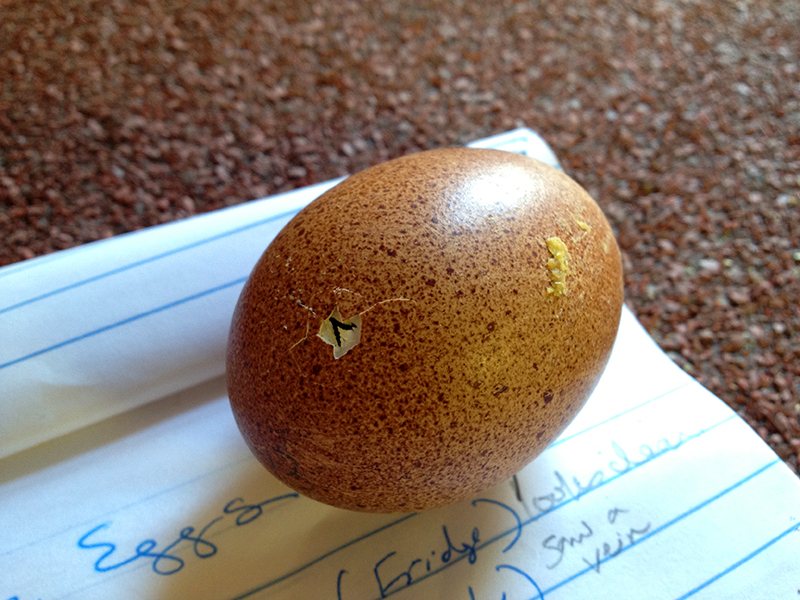
This chick is inside, faintly peeping, and I could feel and see it move through the hole. I put it quickly back under its mother and checked Oregano, the barred olive egger, very fast.

I could see under her feathers that two eggs had pipped, but I didn’t dig around exploring. Now isn’t the time to fuss anyone up, especially with one already dead hatchling, so I am going to leave them alone and hope that I wake up in the morning to some live babies.
Ever since April I’ve been hoping one of my hens would go broody and hatch some chicks. Why? Because baby chicks are some of the things that make life worth living, of course. That and I am seriously curious to see what kind of crosses would result from my Wheaten Ameraucana rooster over Black Copper Marans, Lavender Orpingtons, a Barred Olive Egger, and whatever mix Lilac and Iris are (Black Australorps and Mottled Java, according to their breeder).* Iris and Lilac are in their second year of lay, and it’s good to have younger pullets coming along to take over egg-laying duties. And finally, now that I am free-ranging the birds outside most days, I anticipate that at some point I will have predator loss and don’t want to be caught out with not enough laying hens to keep eggs in the fridge.
A broody hen is a wonderful creature because she manages all the care, feeding, and warming of young chicks. If you have ever raised chicks, you know that it’s a big, messy job to monitor their brooder temperature, clean up after them, keep them safe from drafts and predators, and make sure they get enough to drink and eat. So I told myself that the only way I would raise chicks this year was if a hen did all the work for me!
Last year Iris went unbreakably broody and I ended up giving her a clutch of fertile guinea eggs. She brooded them in a dog crate in the garage and hatched out and raised nine guineas. Here’s one at several weeks old, posing for its CraigsList portrait:
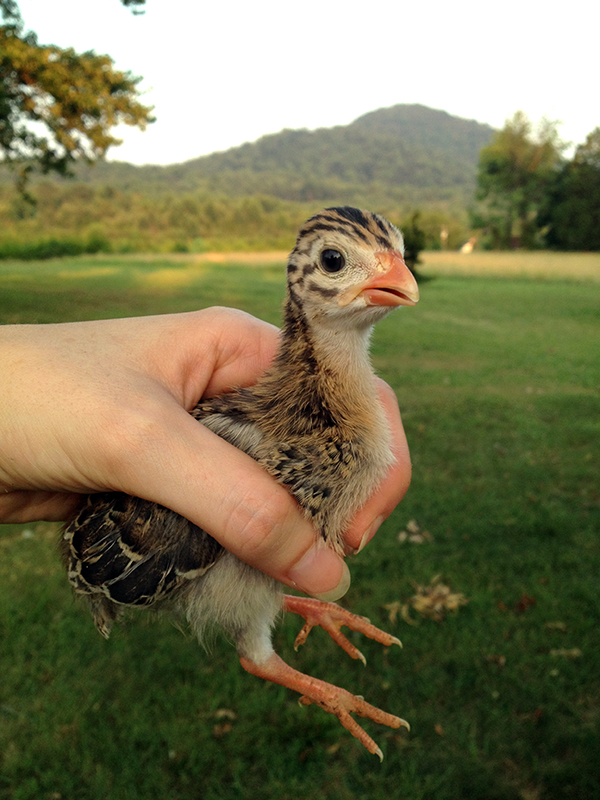
I got to watch the hatch and meet the still-damp keets, and it was one of the neatest days of my life. But this year, Iris has chosen to not do it again. Being trapped in a small cage with nine flighty, frantic, velociraptor-looking guinea keets was probably enough for her to sign off on motherhood forever. Not that I blame her—check out how those ravenous minidinosaurs are eying up their adopted mother’s toes while Iris pleads with her eyes for a Calgon moment.
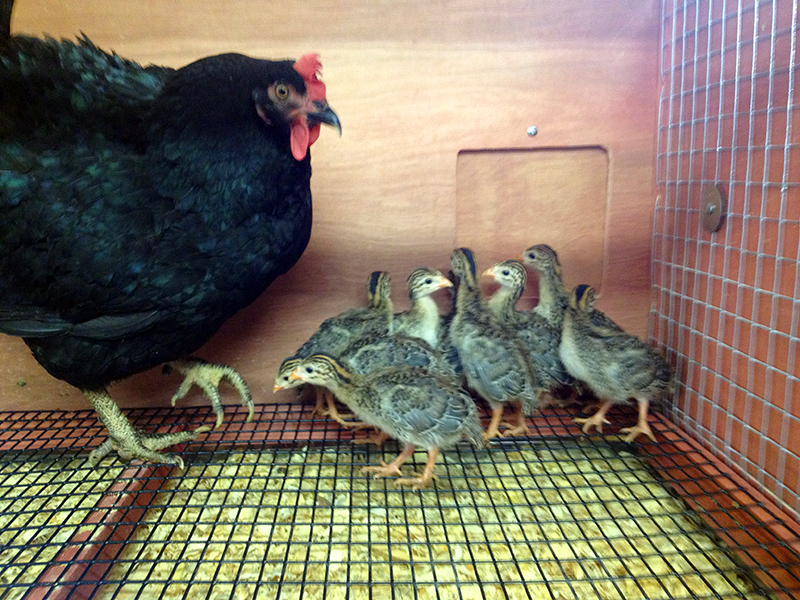
The most time-tested way to induce broodiness in a hen is to let eggs accumulate in the nest box. When the hen feels a growing clutch beneath her, some hormone switches in her brain that tells her to buckle down and brood. She will remain on the nest, barely eating and drinking, and will often pull feathers out of her breast so that she can keep the eggs tucked right next to her bare skin.
For weeks now I’ve been letting eggs accumulate, rotating out the older ones after a day or two in order to keep some in the fridge. I also placed the infamous glass eggs in the nests to trick the hens in to thinking there were always eggs waiting for a mother. And finally, it started to look like a few of then hens were beginning to feel broody.
Oregano, my beautiful barred olive egger, was the first to show any sort of devotion. After she’d been on the nest about a week, I fixed up a broody coop in the garage and built her a cardboard brood nest. It’s best to have a hen incubate eggs and raise chicks in a quiet, private place away from the bustle of the main coop, where flock mates may see new babies as tasty hors d’oeuvres. I was waiting for nightfall to move her to her new home when one of my Black Copper Marans saw the nest was exposed and jumped up to sit on the eggs.
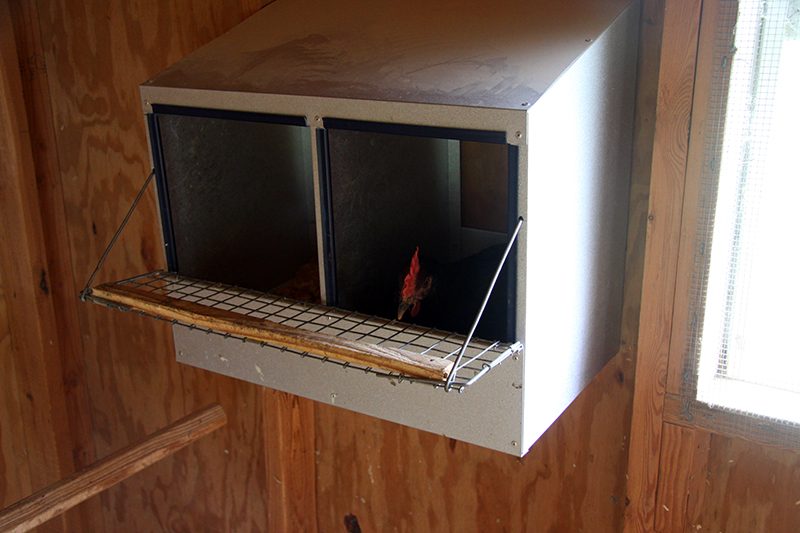
After dark, when I went to collect Oregano, the Black Copper Marans was still sitting tight on the eggs. One look and I got her message: She wanted a clutch of her own.
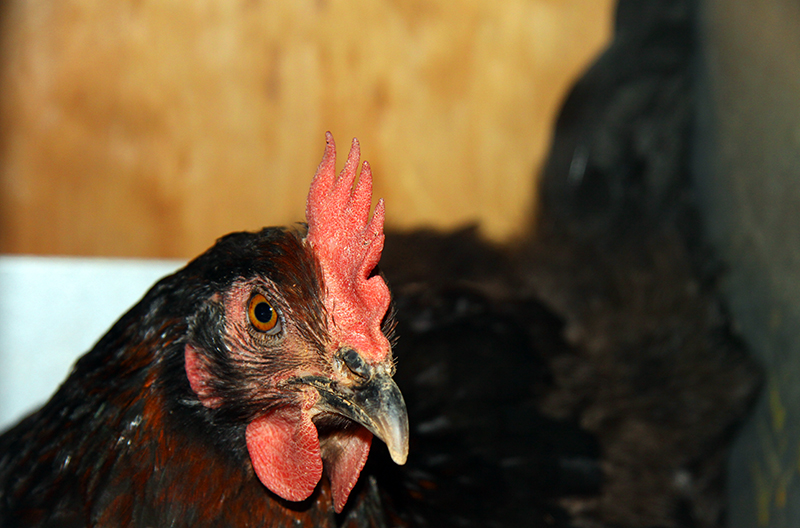
Oregano had assumed a broody position in the adjoining nest box. So I grabbed her and moved her and the eggs into the garage coop.
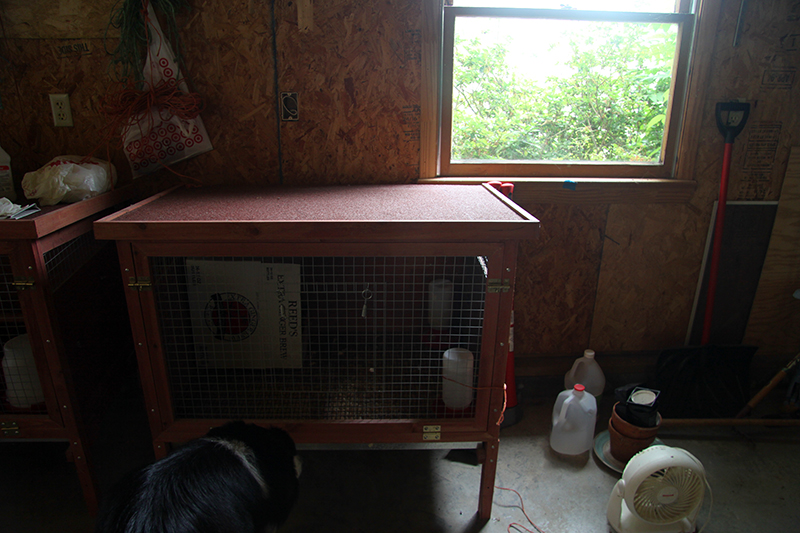
Oregano accepted her new nest and has stayed on it since Friday.
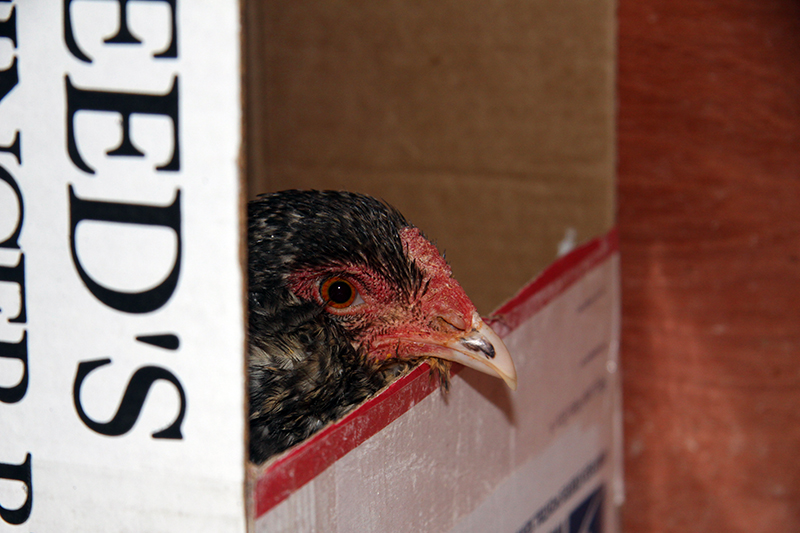
But the Black Copper Marans was still sitting on the glass eggs. And so I fixed up a second broody coop in the garage, built another cardboard next box, and last night moved her into a brood cage next to Oregano. So now I have two broody hens.
I have been saving out eggs for a week or so now, and when I get numbers I am satisfied with I will remove the glass and sacrificial eggs from under the hens and replace them with these fresh eggs. That way all embryos will start to develop at once, and all chicks will hatch at the same time. It’s a bit sad as the eggs are developing under Oregano, but their job really is to just “hold” the hen in a broody mindset until the more valuable eggs are introduced.
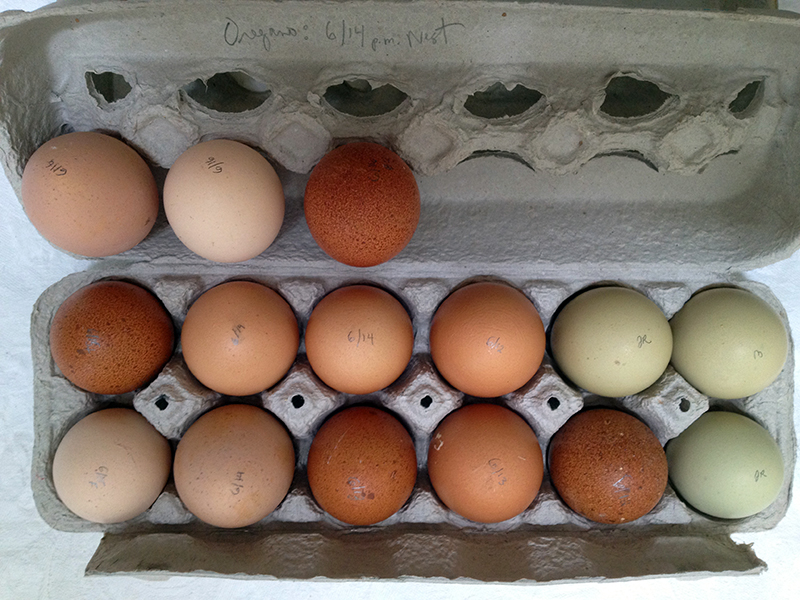
I wasn’t really planning on trying to raise two clutches, but at the end of the day it’s not such a bad thing. It means I can hatch more eggs, which is good as there is no way of knowing what the fertility rate is amongst my hens’ eggs. And, if one of the hens begins incubating and gives up, I could move the most valuable eggs to the other hen and have her take over. Thus, I am waiting until the same night to give both hens their eggs, and then we will see what happens! There is still a lot that can go wrong in the 21 days it takes to cook a chick, but I am having fun working with my broodies. If you’d like to know more, allow me to refer you to this excellent article by my favorite author on all things chicken, Harvey Ussery: Working with Broody Hens.
*A quick digression on chicken breeds and egg color: I have the right set-up to produce olive eggers, which, as their name suggests, lay olive colored eggs. To make a nice olive egger, you need a dark brown egg-laying breed (such as Black Copper Marans) mixed with a blue egg laying breed (Wheaten Ameraucana—my rooster). My Black Copper Marans don’t lay very dark eggs and I have no idea what sort of blue egg genetics my rooster carries, so I don’t suspect I will break any records with any pullets I hatch from that combination. But at the very least, I should end up with some sort of green egg, which is plenty exciting to me.
Now here is where it gets interesting. I have three eggs saved out from Oregano, my barred olive egger (the green eggs in the photo above). She does lay a very nice olive-colored egg, when she lays. By crossing her with Calabrese, and his blue egg genes, I may end up with a pullet that lays a really green egg, as opposed to an olive egg. But who knows, really? I have read about chicken genetics until I fell over from confusion and still am not sure what will happen. Mostly because I know nothing about the genetics of the birds I am starting with, other than their supposed breeds and what color eggs the hens lay now. And there’s always the possibility that I will hatch 100% cockerels and then the whole experiment is good for nothing but the freezer. And even if I do hatch pullets, it will be another year until they lay and who knows if I will even be in to chickens then!















